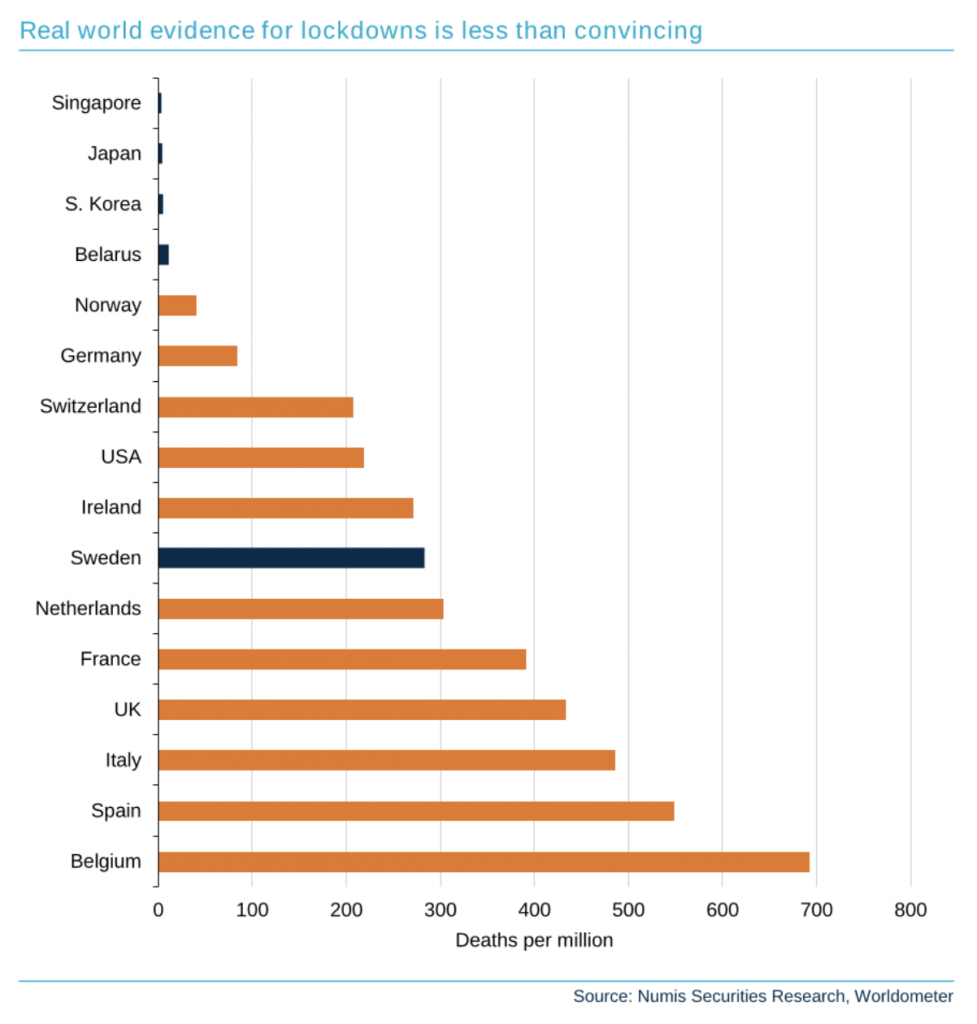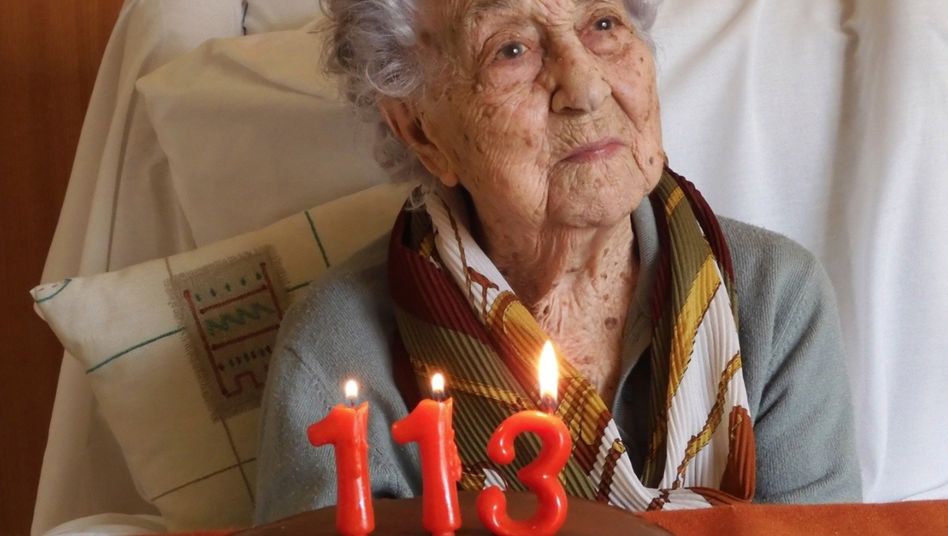
The Times says the teaching unions are advising their members not to return to work if primary schools reopen in June. “The National Education Union (NEU) said it was unconvinced that there was any scientific basis behind government guidance issued yesterday that teachers didn’t need PPE equipment to keep them safe,” Rosemary Bennett reports. She continues: “Many parents are also sceptical that the guidelines would keep their children, family members and the wider population safe.” I was quite surprised to read that, given the recent slew of evidence that children don’t transmit the disease. But the real jaw-dropper is that Anneliese Dodds, the shadow chancellor, told the Times she would keep her six year-old son at home unless the Government provided evidence to show that going to school would not risk harming others. Does she not realise that children under 10 aren’t infectious? Across the entire world, there hasn’t been a single case – NOT A SINGLE CASE – of a child under 10 infecting someone else. What more assurance does Anneliese Dodds need?
I wonder if the shadow chancellor has signed this Change.org petition demanding the Government give parents the option of keeping their kids out of school if they reopen in June because “many of us… feel it is too early”. So far, it has had over 500,000 signatures.

The news broke this morning that the UK economy shrank by 5.8% in March, the largest month-on-month fall since records began in 1997, according to the Times. The economy shrank by 2% in the first quarter, the sharpest fall since the final quarter of 2008, when Britain was in the throes of the financial crisis. The story continues: “Official figures are likely to show a much sharper contraction in the second quarter of the year as the data will capture the full effects of lockdown, which was introduced on March 23rd. Analysts said that the latest data suggested that the economy contracted by 21% after the lockdown was imposed.”
On its front page, the Telegraph splashes with a story based on a leaked Treasury document it’s got its hands on that estimates this year’s budget deficit will be £376 billion. “The Treasury’s own ‘base case scenario’ for its budget deficit by the end of this financial year is £337 billion – more than £280 billion more than pre-pandemic forecasts,” write Gordon Rayner and Anna Mikhailova. And remember, that’s “base case”. The Treasury’s “worst-case” scenario is for a deficit of £516 billion, although in the most extreme case it could be as high as £1.2 trillion. How’s the Government going to pay for this without plunging us into a sovereign debt crisis? Tax rises, freezing public sector wages and abandoning the “triple lock” on pensions, according to the Telegraph. This would break the “tax lock” included in the Conservative Party’s last manifesto, promising not to increase the headline rates of income tax, National Insurance contributions or VAT. As one senior Conservative MP said to me at the weekend, “I’m beginning to think we may not win the next election.”
By way of confirmation, the latest YouGov poll has Keir Starmer’s approval ratings climbing above Boris’s – and Starmer made a decent fist of Prime Minister’s Questions today, skewering Boris on care home deaths. Ladbrokes is currently offering 11/8 on Labour winning the most seats at the next election, although you may get better odds elsewhere. Worth a punt, I’d say.
In other polling news, YouGov reveals that a majority of Britons have found being imprisoned in their homes during lockdown a “positive” experience. 56% of respondents think it’s “positive” compared to just 11% who think it’s “negative”. Could it be connected with the fact that Tequila sales are up 175%? To help readers understand this curious phenomenon I thought I’d post a picture of a typical Briton enjoying lockdown:

Not every country is as reluctant to resume normal life as the UK. The Swiss have accelerated their exit plans, bringing them forward by three weeks. Under the original plan, bars, restaurants, gyms, schools, museums and libraries weren’t due to reopen until June 8th, but they reopened on Monday instead. Minister of Health Alain Berset thinks bringing the timetable forward “is a good way to learn to live with the virus”. You can read more here. On the plus side, some British golf clubs will be reopening tomorrow and Jacob Rees-Mogg thinks MPs should return to the House of Commons to “set an example”.
In case you missed Matt Ridley and David Davis MP’s joint piece criticising Imperial College’s modelling in the Sunday Telegraph, Matt has reposted it on his blog. They focus on the shortcomings of the code, drawing in part on the review published on this website last week. The two parliamentarians also make the point that if critical Government decisions affecting all our lives are going to be based on computer models, the code powering those models really ought to be made public:
When ministers make statements about coronavirus policy they invariably say that they are “following the science”… In this case, that phrase “the science” effectively means the Imperial College model, forecasting potentially hundreds of thousands of deaths, on the output of which the Government instituted the lockdown in March. Sage’s advice has a huge impact on the lives of millions. Yet the committee meets in private, publishes no minutes, and until it was put under pressure did not even release the names of its members. We were making decisions based on the output of a black box, and a locked one at that.
A reader has flagged up an excellent presentation by Numis Healthcare Research Team – a real tour de horizon of what we know about the pandemic. Lots of great graphs, including the one below. Orange lines for countries that have lockdowns, black lines for those that don’t:

The Telegraph has published a very damning piece by Ambrose Evans-Pritchard. His assessment of the Government’s response to the crisis is withering, and much of it is based on an email he received from a “Covid cardiologist at a top London hospital”. Here’s Ambrose’s summary of the email, as well as some direct quotes from it:
Basically, every mistake that could have been made, was made. He likened the care home policy to the Siege of Caffa in 1346, that grim chapter of the Black Death when a Mongol army catapulted plague-ridden bodies over the walls.
“Our policy was to let the virus rip and then ‘cocoon the elderly’,” he wrote. “You don’t know whether to laugh or cry when you contrast that with what we actually did. We discharged known, suspected, and unknown cases into care homes which were unprepared, with no formal warning that the patients were infected, no testing available, and no PPE to prevent transmission. We actively seeded this into the very population that was most vulnerable.
“We let these people die without palliation. The official policy was not to visit care homes – and they didn’t (and still don’t). So, after infecting them with a disease that causes an unpleasant ending, we denied our elders access to a doctor – denied GP visits – and denied admission to hospital. Simple things like fluids, withheld. Effective palliation like syringe drivers, withheld.”
“The striking thing is how consistently the government failed, in every single element of the response, everywhere you turn (the Army excepted),” writes the doctor. “This is probably the most expensive series of errors in the country’s history.”
Reading this doctor’s email helped clarify for me that the case against the lockdown isn’t just that the loss of life it will bring about from other causes will be far greater than the number of people it has supposedly saved from dying of COVID-19 (if any). It’s also that the lockdown itself has exacerbated the loss of life from COVID-19. The fact that NHS hospitals discharged elderly patients diagnosed with coronavirus and sent them back into care homes is an appalling scandal. As Dominic Lawson wrote in the Sunday Times, it shames the nation. Heads must roll.
Izabella Kaminska wrote a terrific piece for the Alphaville section of the FT yesterday in opposition to the censorship of Covid dissent by big tech companies like Facebook and Google via the use of algorithms. She refers to this as “censortech” and the title of her piece is ‘From Fahrenheit 451 to “censortech’.” You need to register with the FT to access Alphaville, but it’s free once you have and it’s worth it just to read this piece. (Jemima Kelly, another Alphaville writer, is also top notch.)
Kaminska points out that not only is content on Facebook and YouTube being removed if it challenges the official Covid orthodoxy, but our private messages are also being policed. (Facebook has just shut down Michiganders Against Excessive Quarantine, an anti-lockdown digital group with 385,000 members.) WhatsApp, for instance, has made it impossible to share controversial clips with more than one person in an effort to limit the dissemination of “fake news”. And what counts as “fake news”? Any newsy content that’s gone viral, apparently. Kaminska found that out when she tried to share a clip of former Swedish chief epidemiologist Johan Giesecke defending Sweden’s response to the pandemic on Sky Australia’s Outsiders programme and received a message telling her she was only allowed to send it to one person. “You can dislike Giesecke’s views,” she says. “But you shouldn’t suppress them. Dissent is essential in a democracy, as is criticism of national policy via respected peers. What are we supposed to do? Pretend Sweden suddenly doesn’t exist?”
What’s so good about Kaminska’s piece is that she doesn’t just rely on standard free speech arguments to criticise “censortech”. She also tries to engage with those who believe that allowing genuine “fake news” to circulate in the public square is dangerous, such as theories linking 5G masts to coronavirus. She points out that suppression is always self-defeating – it pushes the conspiracy theory underground where it can grow unchecked by rational scrutiny and evidence-based rebuttal. Here is the kernel of her argument:
The population doesn’t want to be treated as moronic imbeciles. Most of us have the capacity to differentiate real wingnuttiness from fair and logically set-out criticism.
Besides, fake news and conspiratorial dissent operate much like viruses themselves: there’s often not much we can do about them. Sometimes, rather than suppressing them, the best way of dealing with such content is to let it circulate and die out of its own accord, due to its obvious absurdity.
Like a virus, if the content is too obscene, wacky, or obviously dangerous, it kills its own chances of long-term survival because it can be so easily debunked or argued against. Society will eventually push back with anti-fake news arguments that appeal to the logic of those infected by the false tales, or by “vaccinating” the yet-to-be exposed with measured and controlled exposure to the mistruth, albeit in the correct factual context. This is why the most destructive conspiracies only ever marginally veer away from the truth. The more logical, believable and seemingly benign they appear, the far more likely they are to survive and propagate.
Suppression of a highly persuasive conspiracy theory – say by making it more difficult to spread, or by its becoming too controversial to even mention in polite company – is rarely an effective strategy for keeping it at bay. All that does is make it even more difficult for society (in the style of an immunological response, if you might allow us to extend this metaphor) to challenge its assumptions, as then it retreats to secretive echo chambers where opposing views cannot be directed at it. This, in turn, allows such “fake news” to penetrate deep into the minds of the exposed, and indoctrinate them on a potentially irreversible level.
That last paragraph reminded me of a similar point made by Harvard psychologist Steven Pinker in a panel discussion organised by Spiked a couple of years ago about why censorship is self-defeating. He even uses the same metaphor as Kaminska, saying that far-right ideology is more likely to flourish underground because if it isn’t challenged in the public square people won’t have the antibodies to resist it. Sunlight is the best disinfectant.
Bad news from the Emerald Isle this morning: the High Court has refused to give permission to John Waters and Gemma O’Doherty to legally challenge the constitutionality of the Irish Government’s response to the pandemic. The judge ruled that the burden of proof fell on the litigants to show that the Government’s reaction was disproportionate to the threat posed by the virus and they hadn’t done so. Does this mean the Irish Government is legally entitled to suspend rights enshrined in the country’s constitution, and underpinned by the European Convention on Human Rights, unless the people whose rights are being denied can prove that it’s not necessary for public health reasons? Surely, the burden of proof should be on the state? Next stop: the Court of Appeal.
Good explainer here on what the Ro number means and how complex it is. An Ro of >1 doesn’t necessarily mean you’re in trouble, and an Ro of <1 doesn’t mean you’re out of the woods. For instance, you could have a country in which only half a dozen people are infected. If that number increases to 13 the following day, the country would have an Ro of >1. Not a catastrophe, particularly when you factor in that the infection fatality rate is probably ~0.2. Germany’s Ro creeping above 1 for three days in a row wasn’t a catastrophe because the number of new people infected in Germany each day is quite small – about 1,000/day, compared to 20,000/day in the UK. And it returned to below 1 yesterday in any case. When infection numbers are low, a small outbreak somewhere – such as in slaughterhouses, which is what happened in Germany – can push the Ro number above 1, but that isn’t cause for alarm. The BBC’s Science Editor, David Shukman, explains it well here.
Less impressive is this piece by Robert Cuffe, the BBC’s Head of Statistics. He reckons the real death toll from COVID-19 on May 1st was over 50,000. How did he get that figure? By adding up all the “excess deaths”, i.e. the number of deaths in the year to May 1st over and above the five-year average for the same time period. Trouble is, that involves lumping those that haven’t died of COVID-19 in with those that have. He doesn’t even consider the possibility that the lockdown itself may have caused some non-Covid excess deaths – something Sir Ian Diamond, head of the Government’s Statistical Service, drew attention to in his interview on Marr a couple of weeks ago. Must do better, Robert – and you could start by investigating why the piece of work Sir Ian said the ONS was doing on this and would be published “in the next few days” still hasn’t appeared yet. That was on May 3rd.
The German-speaking reader who has been helping this site cover some of the big Covid stories in Germany has read the report by an auditor in the Ministry of Interior that was leaked to Tichys Einblick, a right-of-centre online magazine. It’s now referred to as “the BMI report”, short for Bundesministeriums des Innern. Here are some of the highlights:
Tichys has released the full report. I’ve skimmed through chunks of it and the conclusions and recommendations are uncompromisingly clear: the global threat of the virus has been massively over-estimated, the “collateral damage” caused by lockdown measures is, and will be, “gigantic” and “given that much of this damage will occur in the near and mid-term future, it can no longer be avoided, merely reduced.”
On the lockdown measures still in place, the report says: “The state measures, together with the many social activities and initiatives originally designed to protect the population, but which as causes of the collateral damage have in the meantime lost all purpose, are in the main still in force. This report recommends urgently that they be completely removed in short order to prevent further damage to the population (in particular further unnecessary deaths).”
The report regards the panic over coronavirus as a false alarm and identifies the absence of an adequate feedback loop as the reason the over-reaction wasn’t corrected: “A major reason for the false alarm remaining undiscovered for weeks was that the framework governing the handling by the crisis team, and the wider general management of a pandemic, did not include any processes designed to detect changes in data that might point either to a false alarm, or to the threat of collateral damage – in particular where that involves a threat to life – becoming greater than the risk to health and lives posed by the virus.”
Der Spiegel was predictably dismissive of the report yesterday: “The Interior Ministry led by Horst Seehofer is having to deal with a tricky in-house issue. A researcher in the Ministry has authored a paper – without commission – on the coronavirus crisis that completely contradicts the Ministry’s position. The paper, a good 80 pages long, was (according to Spiegel sources), distributed to a large number of internal colleagues as well as externally. Last weekend it fetched up on on the right-wing site Tichys Einblick, where the researcher is being lauded as some sort of whistleblower.”
Germany is often held up as a model of how to respond to the pandemic, with politicians and commentators citing the country’s lower death rate as evidence that Boris has mishandled the crisis. But this leaked report suggests that, below the surface, the German Government made many of the same mistakes as ours: wildly over-reacting in a blind panic, convinced that if it didn’t do something hundreds of thousands of people would die – which turned out to be a “false alarm”, in the words of Interior Ministry employee. As Andrew Mahon pointed out on Hector Drummond’s blog on Monday, it’s like a remake of Crimson Tide in which the paranoid nuclear submarine commander prevails and starts a nuclear war: “Gene Hackman got his way in almost every country in the Western world.” Where’s Denzel Washington when you need him?

I’m planning to write a book about the catastrophic error governments around the world made in locking down their citizens and have been discussing titles with the pseudonymous author of the piece I published yesterday on this site called “COVID-19 and the infantilisation of dissent“. The three I’ve come up with so far are Burning Down the House, The Model that Gobbled the World and Popular Delusions and the Madness of Crowds Part 2. My correspondent thinks the first one is the best:
Brill titles, all of them, but my vote is definitely for Burning Down the House. It has a timeless feel to it. I guess for me the issue with a word like madness is whether we are talking about madness in the strict social psychological sense of the word, or whether this whole debacle is driven by something a little closer to textbook clinical anxiety. Le Bon’s mad crowds were driven by irrationality and active aggression. But what I see during this lockdown are crowds driven by anxiety; that is a form of hyper-rationality that causes total passivity. People who are rational (i.e. clinically normal) see risk and are prepared to live alongside it (“Okay, I COULD die of BSE; but I’m still going to eat beef because I like it”); but people who are hyper-rational (i.e. suffer from anxiety) can’t let go of that slim statistical chance that they might be the one tragic case to die/suffer from X. So rather than mad crowds full of violence and action, we’ve ended up with hyper-rational crowds that don’t want a fight… they want to hide! You can deal with mad crowds by bringing out the army. But how do you deal with hyper-rational crowds? Reasoned argument won’t work, because ultimately, they can turn any fact, model or statistic around and show you that, actually, statistically, they’re very vulnerable and could very well die/suffer at any moment. This type of thing has been bubbling away in millennial cancel culture for a while now (to “cancel” of course being to undertake an entirely passive action that prevents engagement with anything you perceive as having the potential to “harm” you). For me, what’s changed during this coronavirus outbreak is that governments have suddenly started to feed this hyper-rational anxiety like never before: “You could die. You might die. We understand. It’s okay to wet yourself. But wear PPE. Sure, stay at home. Hide. Under the bed if it makes you feel better. Here, have some free money. Bleach your carpets. Cry. Sob too. Buy a ventilator. Ebay do them. Stay safe. That’s an order.” And what’s resulted is an utterly dysfunctional society that will give some people a free pass from being proper members of society for years to come.
And on to the round-up of all the stories I’ve noticed, or which have been been brought to my attention, in the last 24 hours:
- “Masks-for-all for COVID-19 not based on sound data” – Two experts on respiratory protection say masks shouldn’t be recommended for everybody
- “The coronavirus cure is now worse than the disease” – Interview on Fox News with Dr Scott Atlas, Senior Fellow of Stanford’s Hoover Institution, on why the cure is worse than the disease
- “Opposing lockdown is NOT “profits before people”” – Kit Knightly in Off-Guardian reminds us that economic contractions kill people just as surely as deadly viruses
- “Rand Paul Exposes BRUTALLY Honest Truth About Coronavirus Around Country” – Facebook post featuring the Senator for Kentucky making the case against lockdowns. Watch it before Facebook deletes it
- “World will be same but worse after ‘banal’ virus, says Houellebecq” – The jaundiced French novelist describes COVID-19 as a “banal virus” with “no redeeming qualities… It’s not even sexually transmitted”
- “How apocalyptic is now?” – Oxford political philosopher John Gray compares the coronavirus crisis to the Russian revolution in a cheerfully gloomy piece for UnHerd. “Accelerating a trend that has been underway for decades, the remains of bourgeois life will be swept away,” he says
- “One in three small firms may shut for ever, warns FSB” – Report in the Times based on a survey by the Federation of Small Businesses that seems to bear out Gray’s hypothesis
- “The new battle in libertarian thought” – Peter Franklin in UnHerd thinks a schism has emerged among freedom-loving conservatives during the lockdown, with “visceralists” like Peter Hitchens, Laura Perrins and me on one side, and “rationalists” like Matt Ridley and Tyler Cowan on the other. Last time I checked, Matt and I were pretty closely aligned
- “Will Britain end up following the Swedes?” – Yes, says Freddie Sayers, editor of UnHerd
- “The economic devastation wrought by the pandemic could ultimately kill more people than the virus itself” – Three journalists for the Los Angeles Times have woken up and smelt the (Brazilian) coffee
- “Lockdown sceptics unite!” – Kathy Gyngell, Editor of the Conservative Woman, gives a nice shout-out to James Delingpole and me and our latest London Calling podcast
- “Get a grip, we cannot stay suffocated by the state in lockdown forever” – Great piece by John Longworth
- “Come on Boris, tell a frightened nation that its fears are out of proportion” – Another fantastic column from the always-dependable Allison Pearson in the Telegraph
- “Transcript of Sumption Interview” – Someone has kindly transcribed Jonathan Sumption’s recent interview on Radio 4 and passed it on to Peter Hitchens. Sumption is the Lord Acton of lockdown sceptics
- “Boris must not allow Britain to be sacrificed on the altar of the NHS” – Ted Yarbrough, co-founder of the Daily Globe, has had enough
On Monday, Lockdown Sceptics launched a searchable directory of open businesses across the UK. The idea is to celebrate those retail and hospitality businesses that have reopened, as well as help people find out what has opened in their area – all the more urgent in light of the latest forecast of the Federation of Small Businesses, which says that up to a third of small businesses in Britain may close as a result of the lockdown. But we need your help to build it, so we’ve created a form you can fill out to tell us about those small businesses that have reopened near you. Should be fairly self-explanatory – and the owners of small businesses are welcome to enter their own details. Please visit the page and let us know about those brave folk who are doing their bit to get our country back on its feet.
Some more suggestions for theme songs from readers: “Ball and Chain” by Social Distortion, “Land of Confusion” by Genesis and “Flying Saucer Attack” by the Rezillos.
Thanks as always to those who made a donation in the last 24 hours to pay for the upkeep of this site. It’s a Herculean task, let me tell you. If you feel like donating, you can do so by clicking here. (Every little helps!) And if you want to flag up any stories or links I should include in tomorrow’s update, email me here.
I’ll leave you with some cheering news. In Spain, a 113 year-old lady has recovered from a bout of coronavirus. Maria Branyas was born in 1907 in the United States, where her father worked as a journalist in San Francisco. Among other things, Branyas experienced the pandemic of the Spanish flu of 1918, the Spanish Civil War (1936-1939) and the Franco dictatorship. She married a doctor in 1931 and has three children and 11 grandchildren.

Stop Press: John Waters, one of the litigants in the Irish legal challenge that was knocked back by a High Court judge today, has sent me this quote:
Gemma O’Doherty and I have been refused leave in our application to obtain a Judicial Review of the Irish Government’s lockdown legislation by Judge Charles Meenan at the High Court in Dublin.
We weren’t surprised to be shot down at this stage, especially given the clear attitude of this judge, who conducted the Leave hearings with little grace and mounted a series of irrelevant and personalised attacks on us in his Judgement.
His Judgement reads like a series of splenetic tweets.
Ireland currently labours under a deeply corrupt caretaker government which has now been unlawfully occupying office for more than three months, having been booted out in an election on February 8th. The judge in question was appointed by Fine Gael, the party usurping power. Our job was to demonstrate prima facie unconstitutionality, which by asserting we failed to prove disproportionality, the judge tacitly admitted we had done. Yet he denied us access to a process — Judicial Review — of which the purpose was to explore, in the first instance, the issue of constitutionality at a deeper level. At that stage, at full Judicial Review hearing, we would need to demonstrate unconstitutionality to a higher standard of proof. The State would then be obliged to show that its breach of the Constitution occurred for reasons that were proportionate, unavoidable, urgent, etc. This, clearly, is the stuff of a full hearing, not of the Leave process, which is supposed to have a low bar — ‘arguable case’. The judge flipped the onus of proof, asserting that we had failed to show disproportionality. This is nonsense, not least because we did not submit any arguments on disproportionality, anymore than the other side offered arguments as to proportionality. It just wasn’t part of the hearing.
We’re looking at our options, which include an appeal. But the judge has postponed the issue of costs, inviting submissions, so that option is delayed. There are others, however. We are determined to take this all the way. Even though the Irish legislation has a ‘sunset clause” (a date when it lapses, November 2020) we need to expunge it from history so that no one ever dares to attempt anything like this again.










To join in with the discussion please make a donation to The Daily Sceptic.
Profanity and abuse will be removed and may lead to a permanent ban.